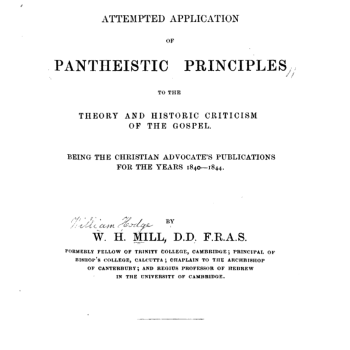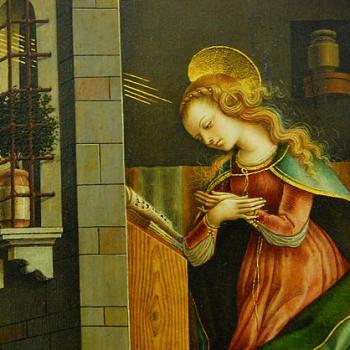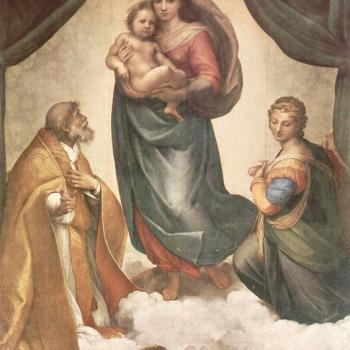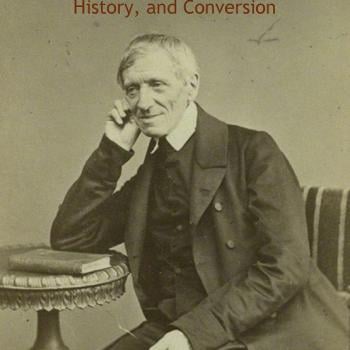
1) Luke 2:7 (RSV) And she gave birth to her first-born son . . .
Critics of the perpetual virginity of Mary (“PVM”) contend that “first-born” in Luke 2:7 is proof of — or at least strongly implies — that the Blessed Virgin Mary bore additional children. But “first-born” in Hebrew (bekor / בְּכוֹר: Strong’s word #1060) referred primarily to the first male son who “opened the womb”. Hence:
2) Numbers 3:12 Behold, I have taken the Levites from among the people of Israel instead of every first-born that opens the womb among the people of Israel. (cf. “opens the womb” in Ex 13:12; 34:19; Num 18:15)
Bekor did not include within itself reference to any additional children. The fact that this first male child was automatically called (when there were no other children) “first-born” shows by common sense that it applied whether or not additional children were in mind. In other words, it didn’t mean, by definition, “first of many” because if indeed it necessarily implied other children, then it could only have been used after those children had been born, in retrospect. But in fact this was not the practice. This understanding was the same in the New Testament, as shown by this passage:
3) Luke 2:22-23 And when the time came for their purification according to the law of Moses, they brought him up to Jerusalem to present him to the Lord [23] (as it is written in the law of the Lord, “Every male that opens the womb shall be called holy to the Lord”)
The word in Luke 2:7 is prototokos / πρωτότοκος: Strong’s word #4416. Kittel’s Theological Dictionary of the New Testament (one-volume edition, p. 967) states about its meaning in this verse: “Of itself it does not necessarily imply that Mary has other children.” Likewise, the Protestant Hastings Bible Dictionary (“Brethren of the Lord [2]”) concurs:
πρωτότοκος [prototokos / firstborn] among the Jews was a technical term, meaning ‘that which openeth the womb’ (Exodus 34:19 ff.), and does not imply the birth of other offspring.
4) Matthew 1:24-25 When Joseph woke from sleep, he did as the angel of the Lord commanded him; he took his wife, [25] but knew her not until she had borne a son; and he called his name Jesus.
This verse has been used as a supposed “proof” that Mary didn’t remain a virgin after the birth of Jesus, and that it necessarily implies a future change from what was the state of affairs before, but it proves no such thing, because in both English grammar and biblical usage it can simply mean “up to the time of” with no reference to the time after that. Compare also the following similar usages:
5) 1 Samuel 16:23 And Michal the daughter of Saul had no child to the day of her death.
So she had one after her death?
6) Matthew 11:12 From the days of John the Baptist until now the kingdom of heaven has suffered violence, and men of violence take it by force.
Violence clearly didn’t cease at that time; it was ongoing.
7) Philippians 1:5 thankful for your partnership in the gospel from the first day until now.
So Paul wasn’t thankful to the Philippian Christians anymore after the time he wrote that?
8) 1 Timothy 4:13 Till I come, attend to the public reading of scripture, to preaching, to teaching.
Are they supposed to stop doing so after he arrives?
9) John 19:26-27 When Jesus saw his mother, and the disciple whom he loved standing near, he said to his mother, “Woman, behold, your son!” [27] Then he said to the disciple, “Behold, your mother!” And from that hour the disciple took her to his own home.
Mary is committed to the care of the Apostle John by Jesus from the cross. Many Protestant interpreters agree with the Catholic view that Jesus likely wouldn’t have done this if He had brothers (who would all have been younger than He was). It would have been a rank insult to these siblings, if they had actually existed: especially the fact that a non-son was called Mary’s “son” by Jesus. Or are we to believe that they had all suddenly died in the space of the three years of Jesus’ ministry or immigrated to Egypt or something?
Renowned Anglican scholar J. B. Lightfoot even thought that this consideration by itself decisively disproved the “siblings” theory. Some try to evade this difficulty by claiming that all of His siblings didn’t believe in Him; therefore, Jesus chose one of His disciples. But that’s simply a gratuitous assumption and special pleading. The Bible doesn’t state such a thing, and that wouldn’t have been relevant in Jewish culture, anyway: children took care of older parents.
10) Luke 1:30-31, 34 And the angel said to her, “Do not be afraid, Mary, for you have found favor with God. [31] And behold, you will conceive in your womb and bear a son, . . . [34] And Mary said to the angel, “How shall this be, since I have no husband?”
Catholics believe that Mary’s reply to the angel Gabriel indicates a prior vow of consecrated virginity. St. Augustine, in his work Holy Virginity (4, 4), wrote: “Surely, she would not say, ‘How shall this be?’ unless she had already vowed herself to God as a virgin . . . If she intended to have intercourse, she wouldn’t have asked this question!”
11) The Greek word for “brother” in the New Testament is adelphos / ἀδελφός: Strong’s word #80). The well-known Protestant linguistic reference An Expository Dictionary of New Testament Words, by W.E. Vine, defines it as follows:
Adelphos: denotes a brother, or near kinsman; in the plural, a community based on identity of origin or life. It is used of: 1) male children of the same parents . . .; 2) male descendants of the same parents, Acts 7:23, 26; Hebrews 7:5; . . .4) people of the same nationality, Acts 3:17, 22; Romans 9:3 . . .; 5) any man, a neighbour, Luke 10:29; Matthew 5:22, 7:3; 6) persons united by a common interest, Matthew 5:47; 7) persons united by a common calling, Revelation 22:9; 8) mankind, Matthew 25:40; Hebrews 2:17; 9) the disciples, and so, by implication, all believers, Matthew 28:10; John 20:17; 10) believers, apart from sex, Matthew 23:8; Acts 1:15; Romans 1:13; 1 Thessalonians 1:4; Revelation 19:10 (the word ‘sisters’ is used of believers, only in 1 Timothy 5:2) . . .
It is evident, therefore, from the range of possible definitions of adelphos, that Jesus’ “brothers” need not necessarily be siblings of Jesus on linguistic grounds, as many commentators, learned and unlearned (rather remarkably), seem to assume uncritically (some even foolishly thinking that this word alone disproves the PVM).
12) Matthew 1:18 Now the birth of Jesus Christ took place in this way. When his mother Mary had been betrothed to Joseph, before they came together she was found to be with child of the Holy Spirit;
Critics of the PVM think this proves that Joseph and Mary had normal marital (conjugal) relations after the birth of Jesus. But the Greek word for “came together” (sunerchomai / συνέρχομαι: Strong’s word #4905), has a wide range of meaning, almost always not about sex. In fact, if we look at all the New Testament usages of this word, only one instance out of the 29 besides Matthew 1:18 is plainly sexual in meaning, in context (1 Cor 7:5).
In 28 other cases, its use is clearly not sexual in nature (Mk 3:20; 6:33; 14:53; Lk 5:15; 23:55; Jn 11:33; 18:20; Acts 1:6, 21; 2:6; 5:16; 9:39; 10:23, 27, 45; 11:12; 15:38; 16:13; 19:32; 21:16, 22; 25:17; 28:17; 1 Cor 11:17, 18, 20, 33, 34; 14:23, 26). It could simply have referred to the time they would actually live together as a married couple (because they didn’t during betrothal); when the husband takes her into his home (cf. Dt 20:7).
Another counter-argument is to list different translations where sunerchomai in this passage does not (necessarily) have a sexual connotation:
Phillips / New English Bible / REB: “before their marriage”
Today’s English Version / Goodspeed / CEV: “before they were married”
Barclay: “before they became man and wife”
Jerusalem: “before they came to live together”
Williams: “before they had lived together”
NRSV / Beck: “before they lived together”
Neither “marriage” nor “living together” means “engaging in sexual relations.” Granted, the latter usually is associated with the former, but they don’t mean the same thing, which is at issue. If these translators had thought that the latter was what the author (or context) intended or required, then clearly they wouldn’t have translated as they did. But no less than eleven translations (only the Jerusalem Bible has a connection with Catholicism) render the word in this fashion: in a way that does not support the “anti-perpetual virginity” position.
I am happy to yield to their professional judgment, as shown in the ways that they decided to translate the word sunerchomai in this instance. And the phrase “come together” itself does not necessarily mean sexuality (in English) either. It could, but it’s not clear-cut. Moreover, there is no translation I have located that expresses a sexual meaning beyond any reasonable or linguistic doubt.
13) In the King James Version, Jacob is called the “brother” of his Uncle Laban (Gen 29:15 / 29:10). The same thing occurs with regard to Lot and Abraham (Genesis 14:14 / 11:26-27). The Revised Standard Version uses “kinsman” at 29:15 and 14:14.
14) Neither Hebrew nor Aramaic has a word for “cousin.” Although the New Testament was written in Greek, which does have such a word, the literal rendering of the Hebrew word ach, which was used by the first disciples and Jesus, is indeed adelphos, the literal equivalent of the English “brother.”
15) In Luke 2:41-51: the story of Mary and Joseph taking Jesus to the temple at the age of twelve, it’s fairly obvious that Jesus is the only child. Since everyone agrees He was the first child of Mary, if there were up to five or more siblings, as some maintain (arguing, for example, from Matthew 13:55), they were nowhere to be found at this time.
This would mean that Mary had no further children for at least twelve years after Jesus (in the “siblings / Helvidian theory”). Mary was estimated to have been sixteen at His birth, which would then make her still only around 28 at this time. We’re to believe that it makes sense that she bore her first child at sixteen and then had no more from 16-28, and then had four or more after that? That’s not very plausible.
And when Mary said to Jesus, “your father and I have been looking for you anxiously” (2:48), wouldn’t she have said, “your father and I and your brothers an sisters . . .”? When Joseph and Mary were looking for Jesus, it doesn’t say they went to His supposed five brothers and four sisters (I would certainly do that first, as a parent); rather, “they sought him among their kinsfolk and acquaintances” (Lk 2:44). When they set out for Jerusalem, the Bible states that “he [Jesus] went down with them and came to Nazareth” (2:51). When they left, it’s described as, “And he went down with them and came to Nazareth . . . ” (2:51). Now it’s true that this doesn’t technically rule out siblings, but it sure doesn’t positively suggest them, does it?
16) Jesus Himself uses “brethren” in the larger sense. In Matthew 23:8 He calls the “crowds” and His “disciples” (23:1) “brethren.” In other words, they are each other’s “brothers” (that is, the brotherhood of Christians).
17) In Matthew 12:49-50 Jesus calls His disciples and all who do the will of His Father “my brothers.”
18) Mark 15:40 . . . Mary the mother of James the younger and of Joses, and Salo’me
19) Matthew 27:56 . . . Mary the mother of James and Joseph, . . .
20) John 19:25 . . .But standing by the cross of Jesus were his mother, and his mother’s sister, Mary the wife of Clopas,
This other Mary (Matthew 27:61, 28:1) is called the Blessed Virgin Mary’s adelphe above (it isn’t likely that there were two women named “Mary” in one family, so she was likely a sister-in-law — 2nd century Hegesippus, as recorded in Eusebius, held that Clopas was the brother of St. Joseph — or a cousin: adelphe can be used for both).
21-22) Matthew 13:55-56 (cf. Mark 6:3) mentions “his brothers James and Joseph and Simon and Judas” and “his sisters,” but in Mark 15:40 and Matthew 27:56 above, James and Joseph are also called sons of Mary, wife of Clopas. Therefore, at least those two aren’t Jesus’ siblings. But all are called “brothers.”
23) It’s true that sungenis (Greek for “cousin”) and its cognate sungenia appear in the New Testament fifteen times (sungenia: Lk 1:61; Acts 7:3, 14; sungenis: Mk 6:4; Lk 1:36, 58; 2:44; 14:12; 21:16; Jn 18:26; Acts 10:24; Rom 9:3; 16:7, 11, 21). But they are usually translated kinsmen, kinsfolk, or kindred in KJV: that is, in a sense wider than cousin: often referring to the entire nation of Hebrews.
Thus, the eminent Protestant linguist W. E. Vine, in his Expository Dictionary of New Testament Words, lists sungenis not only under “Cousin” but also under “Kin, Kinsfolk, Kinsman, Kinswoman.” In all but two of these occurrences, the authors were either Luke or Paul. Luke was a Greek Gentile. Paul, though Jewish, was raised in the very cosmopolitan, culturally Greek town of Tarsus. But even so, both still clearly used adelphos many times with the meaning of non-sibling (Lk 10:29; Acts 3:17; 7:23-26; Rom 1:7, 13; 9:3; 1 Thess 1:4). They understood what all these words meant, yet they continued to use adelphos even in those instances that had a non-sibling application.
24) Strikingly, it looks like every time St. Paul uses adelphos (unless I missed one or two), he means it as something other than blood brother or sibling. He uses the word or related cognates no less than 138 times in this way. Yet we often hear about Galatians 1:19: “James the Lord’s brother.” 137 other times, Paul means non-sibling, yet amazingly enough, we’re told that here he must mean sibling, because he uses the word adelphos? That doesn’t make any sense.
Paul understood what all these words meant, yet he continued to use adelphos even in those instances which had a non-sibling application (just as Catholics argue was the case in the Gospels, with Jesus’ “brothers”). The fallacious linguistic argument often used tries to set forth the illogical notion that if a writer knows of a more specific word and doesn’t use it (i.e., anepsios or sungenis), then he must mean a more literal sense for the word that he does use (adelphos). But Paul’s use of adelphos in a sense other than sibling, explodes this argument.
25) Some folks think it is a compelling argument that sungenis isn’t used to describe the brothers of Jesus. But they need to examine the following passage, where sungenis appears:
Mark 6:4 And Jesus said to them, “A prophet is not without honor, except in his own country, and among his own kin, and in his own house.” (cf. Jn 7:5: “For even his brothers did not believe in him”)
What is the context? In the preceding verse, the people in “his own country” (6:1) exclaimed: ‘Is not this the carpenter, the son of Mary and brother of James and Joses and Judas and Simon, and are not his sisters here with us?’ . . .” It can plausibly be argued, then, that Jesus’ reference to kin (sungenis) refers (at least in part) back to this mention of His “brothers” and “sisters”: His relatives. Since we know that sungenis means cousins or more distant relatives, that would be an indication of the status of those called Jesus’ “brothers”.
26) Jude is called the Lord’s “brother” in Matthew 13:55 and Mark 6:3. If this is the same Jude who wrote the epistle bearing that name (as many think), he calls himself “a servant of Jesus Christ and brother of James” (Jude 1:1). Now, suppose for a moment that he was Jesus’ blood brother. In that case, he refrains from referring to himself as the Lord’s own sibling (while we are told that such a phraseology occurs several times in the New Testament, referring to a sibling relationship) and chooses instead to identify himself as James‘ brother. This is far too strange and implausible to believe. Direct evidence that Simon is Jesus’ first cousin comes from Hegesippus through Eusebius. The latter (arguably) also alludes to Jude (Judas) being Jesus’ first cousin as well:
The same historian [Hegesippus] says that there were also others, descended from one of the so-called brothers of the Saviour, whose name was Judas, . . . (Book III, section 32, part 5; McGiffert translation, italics added; Williamson translates: “one of the ‘brothers’ of the Saviour named Jude . . .”: p. 143)
27) James also refrains from calling himself Jesus’ brother, in his epistle (James 1:1: “servant of God and of the Lord Jesus Christ”): even though St. Paul calls him “the Lord’s brother” (Gal 1:19).
28) Uzziah died when he touched the ark of the covenant, which was arguably the holiest object in the Old Testament, even though he was only trying to prevent it from falling (2 Sam 6:2-7). Others died by merely looking inside the ark (1 Sam 6:19; cf. Ex 33:20). When God was present in a special way on Mt. Sinai, at the time Moses received the Ten Commandments (Exodus, chapters 19 and 20), the people were warned not to even touch the mountain or its border, lest they die (Ex 19:12-13). I submit that this has implications for the propriety (though not literal necessity) of Mary being a perpetual virgin.
It follows analogically, and from pious reflection, I think, that it was fitting and proper by the nature of the relationship of a holy God and man. The Blessed Virgin Mary became, in effect, the New Holy of Holies, where God specially resides. But in the case of Mary, God is more present than He ever was in the tabernacle and temple, because now He is there physically, as a man, as well. Mary is the ark of the new covenant (as the Church fathers called her) and Mother of God (the Son).
The denial of Mary’s perpetual virginity (which was a radical innovation of the last 200-250 years, and not the view of the Protestant founders) exhibits an inadequate understanding of holy places. Consecrated persons and places are “set aside” for God’s holy purposes. Someone wrote to me in a Facebook discussion that Catholic beliefs about Mary would mean she wasn’t a “normal wife.” I replied that Mary was anything but a “normal” Jewish wife in the first place. She was suddenly “with child” miraculously by the Holy Spirit, and gave birth to Jesus: God the Son.
Most Protestants still accept the virgin birth. Consecrated virginity is far less notable than those two events. Yet the incarnation and virgin birth are widely accepted, while perpetual virginity is widely rejected. The traditional unity of the three related things is no longer comprehended by many.
St. Paul (1 Corinthians 7) maintains that the single state allows a higher, undistracted devotion to the Lord. Why should we think, then, that the Mother of God would be anything other than a perpetual virgin, devoted to God the Father, and her Son, God the Son? The virgin birth and perpetual virginity were the means that God chose to create the appropriate context in which the incarnation occurred. In Catholic thinking, and the ancient apostolic tradition, Mary’s perpetual virginity is a protection, so to speak, of the miraculous nature of the incarnation and Jesus’ birth. It’s a Christocentric doctrine: just as all Marian doctrines are.
29) St. Paul uses “cousin” (anepsios) in Colossians 4:10. Interestingly the KJV translates this passage “sister’s son,” which is akin to Semitic terminology and categories). And this is the only time it appears in the New Testament.
30) It’s true that the Gospel writers could have used the words sungenis or anepsios. But their not doing so is not as strong an argument as it may seem at first, once we understand that sungenis also has a very wide latitude (such that Paul only uses it in that wider sense of race or nationalism). That being the case, why use it, since it would be the same scenario as adelphos offers?
The same scenario applies to use of sungenis and its cognates elsewhere (see #22 above). In the KJV they are translated (besides Luke 1:36 and 1:58) kindred, kinsfolk, kin, kinsmen, and kinsman (Mark 6:4; Luke 1:61; 2:44; 14:12; 21:16; John 18:26; Acts 7:3, 14; 10:24). In the RSV, likewise, we have the renderings (even including Luke 1:36, 58) kin, kindred, kinswoman, kinsfolk, kinsmen, and kinsman. So it is unanimous there: not even the English “cousin” is used.
31) Simon was one of Jesus “brothers” in Matthew 13:55 and Mark 6:3. The Christian historian Eusebius provides some relevant information about him:
After the martyrdom of James and the capture of Jerusalem which instantly followed, there is a firm tradition that those of the apostles and disciples of the Lord who were still alive assembled from all parts together with those who, humanly speaking, were kinsmen of the Lord — for most of them were still living. Then they all discussed together whom they should choose as a fit person to succeed James, and voted unanimously that Symeon, son of the Clopas mentioned in the gospel narrative [note: Jn 19:25; perhaps Lk 24:18], was a fit person to occupy the throne of the Jerusalem see. He was, so it is said, a cousin of the Saviour, for Hegesippus tells us that Clopas was Joseph’s brother. (The History of the Church, translated by G. A. Williamson, Baltimore: Penguin Books, 1965, 123-124; italics added)
It turns out, then, that early tradition, from the second-century historian Hegesippus (and we have no reason to doubt its non-theological reporting of relationships) tells us that “Symeon” is also a son of Clopas. That’s very interesting because we have “Simon” (another form of Symeon) listed as a “brother” of Jesus, alongside James and Joseph, in Matthew 13:55 and Mark 6:3. Thus, he is another first cousin, according to this scenario, not a blood brother.
32) Critics of the PVM make a big deal about Jesus’ “brothers” always seeming to be “hanging around” and being with Mary as well They argue that this most likely suggests their being her other children; otherwise, why are they always there? But the Hebrew “household” (if not virtually always) often would contain extended family members. It wasn’t like our nuclear families of today. For example, in the book, Families in Ancient Israel (Leo G. Perdue, editor; Westminster John Knox Press, 1997) we find this description:
The familial roles of males in the household’s kinship structure included those of lineal descent and marriage — grandfather, father, son, and husband — and those lateral relationships — brother, uncle, nephew, and cousin. (pp. 179-180)
The Eerdmans Bible Dictionary (edited by Allen C. Myers, Grand Rapids, Michigan: Eerdmans, rev. ed., 1975) concurs, noting that the Israelite family could include more than one nuclear family (thus, cousins would be residing together):
The basic social unit, comprised of persons related by kinship and sharing a common residence. The Israelite family was an extended family known as the “father’s house” or “household” (Heb. “bet-ab”), consisting of two or more nuclear families (i.e., a married couple and their children) or composite families (an individual with multiple spouses and their offspring) . . . other kin (including grandparents), servants, concubines, and sojourners might also be reckoned part of the household (cf. Gen. 46:5-7, 26). (“Family,” p. 376)
33) The New Testament never uses the phrases, “son[s] of Mary” or “son[s] of Joseph” for anyone besides Jesus.
34) “Son of Mary” appears once, referring to Jesus,
Mark 6:3 “Is not this the carpenter, the son of Mary and brother of James and Joses and Judas and Simon, and are not his sisters here with us?” . . .
Interestingly enough, He is called “brother” of four men and “his sisters” are mentioned. Yet none of them are called “sons / daughters” of Mary or Joseph.
35) The phrase, “Mary’s sons” never appears in the New Testament.
36) Neither one of the phrases, “daughter[s] of Mary” or “Mary’s daughter[s]” ever appear in the New Testament.
37-38) “Son of Joseph” (referring to the carpenter from Nazareth) appears twice: both times referring to Jesus:
John 1:45 Philip found Nathan’a-el, and said to him, “We have found him of whom Moses in the law and also the prophets wrote, Jesus of Nazareth, the son of Joseph.”
John 6:42 They said, “Is not this Jesus, the son of Joseph, whose father and mother we know? . . .”
“Sons of Joseph” appears once (Heb 11:21), but unfortunately for deniers of Mary’s perpetual virginity, it refers to the patriarch Joseph. Why is that, if these are his sons and Jesus’ supposed siblings?
39) The phrase, “Joseph’s sons” never appears in the New Testament.
40) The phrase, “Daughter[s] of Joseph” never appears in the New Testament.
41) The phrase, “Joseph’s daughter[s]” never appears in the New Testament.
42-43) Mary is never called the “mother” of these alleged siblings of Jesus, whereas she is called Jesus’ “mother”:
John 2:1 On the third day there was a marriage at Cana in Galilee, and the mother of Jesus was there;
John 19:25 . . . standing by the cross of Jesus were his mother, and his mother’s sister, Mary the wife of Clopas, and Mary Mag’dalene.
44-45) In the following two passages, these “brothers” were mentioned but Mary wasn’t called their mother; only Jesus‘ mother:
Matthew 13:55 “Is not this the carpenter’s son? Is not his mother called Mary? And are not his brothers James and Joseph and Simon and Judas?”*Acts 1:14 All these with one accord devoted themselves to prayer, together with the women and Mary the mother of Jesus, and with his brothers.












